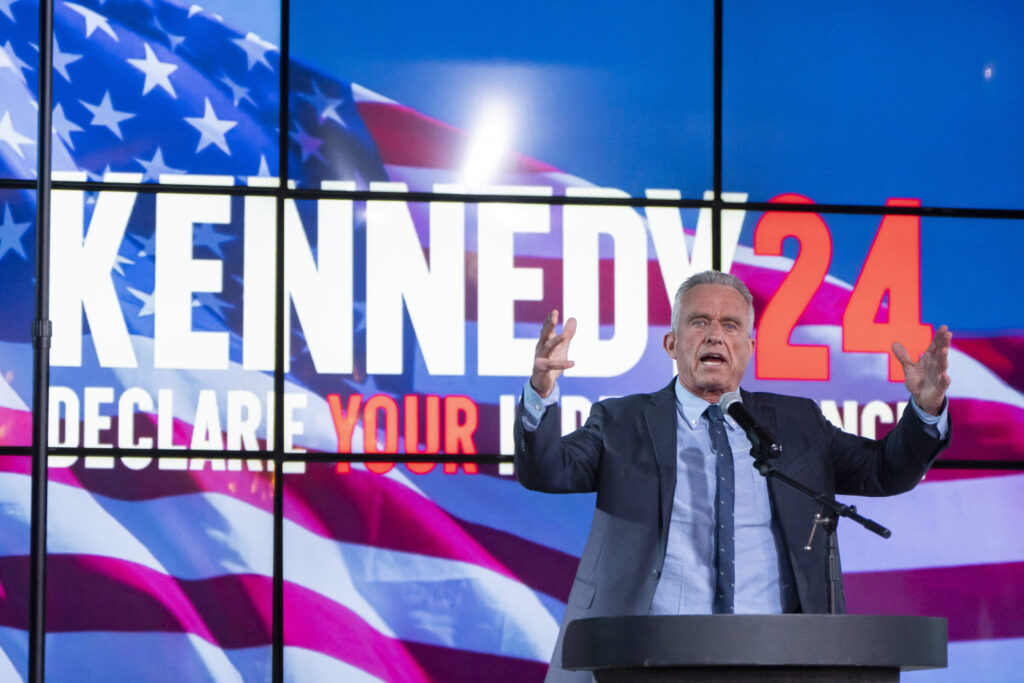Independent Presidential candidate Robert F. Kennedy Jr. speaks during a campaign rally at Legends Event Center on Dec. 20, 2023, in Phoenix, Arizona. (Photo by Rebecca Noble/Getty Images)
On Friday, supporters of Robert F. Kennedy Jr. turned in more than 5,900 signatures to the Alaska Division of Elections, hoping to get the independent presidential candidate on this fall’s ballot.
If successful, Kennedy will join Cornel West as the only independent candidates on Alaska’s presidential ballot thus far.
Under state law and regulation, if a candidate isn’t a member of one of the state’s four recognized political parties, they need to get the signatures of at least 3,614 registered Alaska voters in order to run for president here.
That number is 1% of the turnout in the 2020 presidential election, and the 2028 threshold will be 1% of this year’s turnout.
The threshold is the same whether someone runs as a true independent or as a member of an unrecognized political party.
Unlike in other races, there isn’t an option for a write-in candidate. Thus far, the Alaska Division of Elections has denied three people seeking to run as a write-in and an additional person who failed to submit the needed signatures.
The Alaska Democratic and Republican parties are on course to nominate Joe Biden and Donald Trump, respectively, and they don’t need to gather signatures.
Under state law, a recognized political party — a group with at least 5,000 registered voters in the state — can nominate a presidential and vice presidential candidate according to their bylaws, then submit those names to the Division of Elections.
The Alaska Libertarian Party and the Alaskan Independence Party also meet the 5,000-person threshold.
The AIP traditionally does not nominate a candidate, and party chair John Wayne Howe said that won’t change this year.
He said the party also won’t endorse any other candidate.
“None of them rise up to our qualifications,” Howe said.
The national Libertarian Party nominated Chase Oliver as its presidential nominee during its national convention in May; the Alaska chapter has yet to submit a nominee to state officials.
Unlike in other statewide Alaska elections, there is no top-four primary. When voters go to the polls in November, they’ll use ranked choice voting and likely will have the opportunity to rank more than four people.
Scott Kendall, the Anchorage attorney who wrote most of the ballot measure that created Alaska’s current elections system, said that’s by design.
Presidential primary elections in Alaska have traditionally been run by political parties and aren’t state-funded or state-run.
Installing a state-run top-four primary would have been “an unnecessary exercise,” he said, and would have disrupted “the time-honored tradition” of party-run presidential primaries.
Trump won Alaska’s presidential vote in 2016 and 2020, and Kendall said he expects the Republican nominee to win again in 2024, under the state’s first ranked choice presidential election.
GET THE MORNING HEADLINES DELIVERED TO YOUR INBOX
The post Want to run for President in Alaska? You’ll need a few thousand friends. appeared first on Alaska Beacon.

